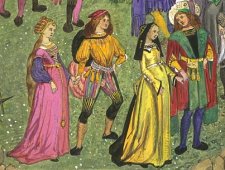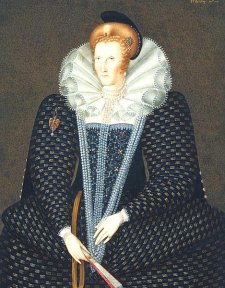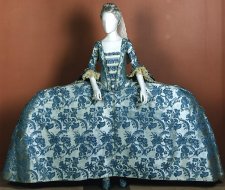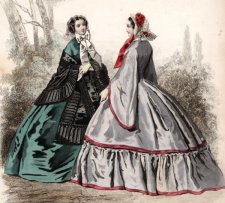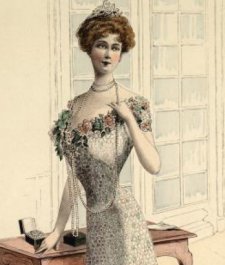| Baleen (whale-bone) uses |
|
Fashionable clothing By far the most important use of whale-bone from the Greenland fishery was as a stiffening element in various items of fashionable attire. Whales and women were intimately associated for over 300 years, to the severe detriment of both. Whales died painful deaths that women might live painful, but fashionable lives. Throughout the middle ages women enjoyed loose fitting, free flowing dresses. This all changed around the beginning of the 16th century when the unadorned lines of mediaeval clothing evolved into moulded shapes. The focus of attention for the next 300 years was to be the waist with women aiming for the smallest possible. In this they were helped by a variety of devices, such as corsets, all stiffened with bands of ivory, wood and even iron, but most successfully by slats of whale-bone. At the same time, the lower part of the body was covered in voluminous skirts and petticoats which by contrast made the waist appear even smaller. At various times in history these were so large that they required support on various frames or cages known as farthingales or crinolines. Again, whale-bone was the ideal material for their production, being light, strong and flexible. These changes in fashion are perhaps best appreciated by taking a few snapshots through British history. Henry
VII - Elizabeth I: 1485-1558 James
II - George III: 1685-1760 George
III - George IV: 1760-1820 It appeared that the day of the whale-boned body might have passed but, unfortunately for the whales, by 1822 the focus returned to the waists and the tight corset once again became an essential fashion accessory. Victoria:
1837-1901
Even young girls were bribed, coaxed and bullied into tight corsetry so that by the time they entered polite society they might do so with a fashionable 18 inch waist. The impact of this increased demand on the cost of whale-bone was dramatic. The price rose from £500 per ton in 1870 to £3000 in 1902. In 1905 when the peak of corset production was reached, the whale-bone brought into Dundee was an order of magnitude more valuable than whale-oil. However, the whales were now almost gone, hunted to the very edge of extinction. How ironic then, that within two years corsets were to become increasingly elastic and the demand for whale-bone collapsed in the face of competition from high tensile steel stays. Such is the fickle nature of the world of fashion |
|
